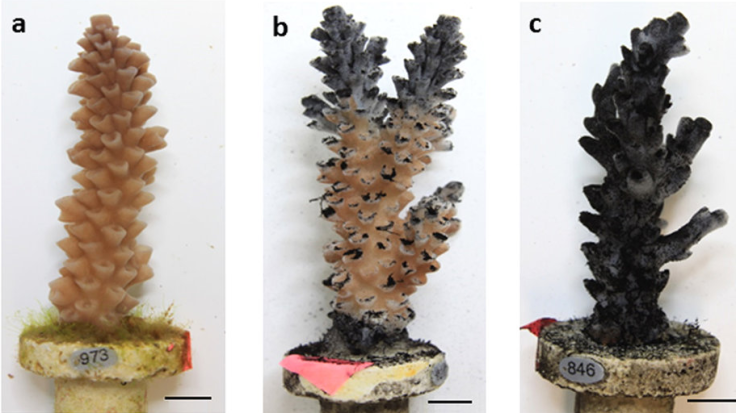Great Barrier Reef: Study Examines Devastating Impact Of Potential Coal Spill On The Iconic Biodiversity Hotspot

For people worried about the state of the iconic Great Barrier Reef, the past few weeks have offered little cause for cheer. Several recent surveys have documented that the planet’s largest living structure is undergoing its worst coral bleaching on record, with up to 93 percent of the reef suffering from some level of damage.
Now, researchers have raised concerns about another disaster that may exacerbate the damage — coal spilled by ships passing through the Great Barrier Reef Marine Park. According to a new study that examines the impact of a coal spill on the delicate biodiversity hotspot, high concentrations of coal dust can not only kill some corals within two weeks, it can also stunt growth of fish and seagrass.
“As global demand for, and marine transport of, coal continues to increase, specific information is needed to effectively manage risks to areas of high conservation value, such as coral reefs and seagrass meadows, that may be impacted by unburnt coal from terrestrial sources and accidental spills,” the study, conducted by researchers from the Australian Institute of Marine Science, said. “This first study to examine the effects of fine coal particles on tropical marine organisms demonstrates that moderate to high levels of coal contamination can substantially decrease growth and increase mortality of important reef-building coral species, reef fish and seagrass.”
The study found that fine coal particles suspended in the water had a “smothering” effect on coral, creating a film that blocked sunlight from reaching it.

“In all coal treatments, particles settled directly onto coral polyps and connecting tissue and the initial response of corals to coal exposure was the release of fine mucus strands, which trapped coal particles and removed them from the tissue surface, similar to the response of corals exposed to sediments,” the authors wrote in the paper. “Branching corals, such as A. tenuis, are often considered among the most resistant morphologies to sedimentation due to their vertical growth yet despite their active mechanisms for coal removal some coral tissue died and sloughed off the skeleton within 14 days.”
Although most fish and seagrass exposed even to high concentrations of coal survived, their growth was severely stunted.
“Suspended sediment can prolong reef fish larvae development, negatively influence gill morphology and increase pathogenic bacterial communities on larval gills, suggesting further studies are required to investigate the vulnerability of early life stages of fish to suspended coal,” the researchers said.
The Great Barrier Reef consists of nearly 3,000 individual reefs and stretches over 1,400 miles along Australia’s northeast coast. The region serves as a habitat for nearly 100 species of jellyfish, 3,000 varieties of mollusks, 1,600 types of fish, over 130 varieties of sharks and rays, and more than 30 species of whales and dolphins.
Although there has been no major incident of coal spillage in the region so far, there have been a few close calls, most recently in 2010, when the Chinese tanker Shen Neng 1 — which was carrying 60,000 tons of coal — ran aground in the marine park, gouging a 1.8-mile scar in the reef.
“Shipping is something we need to very closely regulate but we shouldn't let us distract us from what the main threats are,” Queensland State Environment Minister Steven Miles reportedly said Monday, when asked about the findings of the study. “The main localized threats are sediment and nutrient run-off from the land and the big long-term threat is climate change.”
© Copyright IBTimes 2024. All rights reserved.












